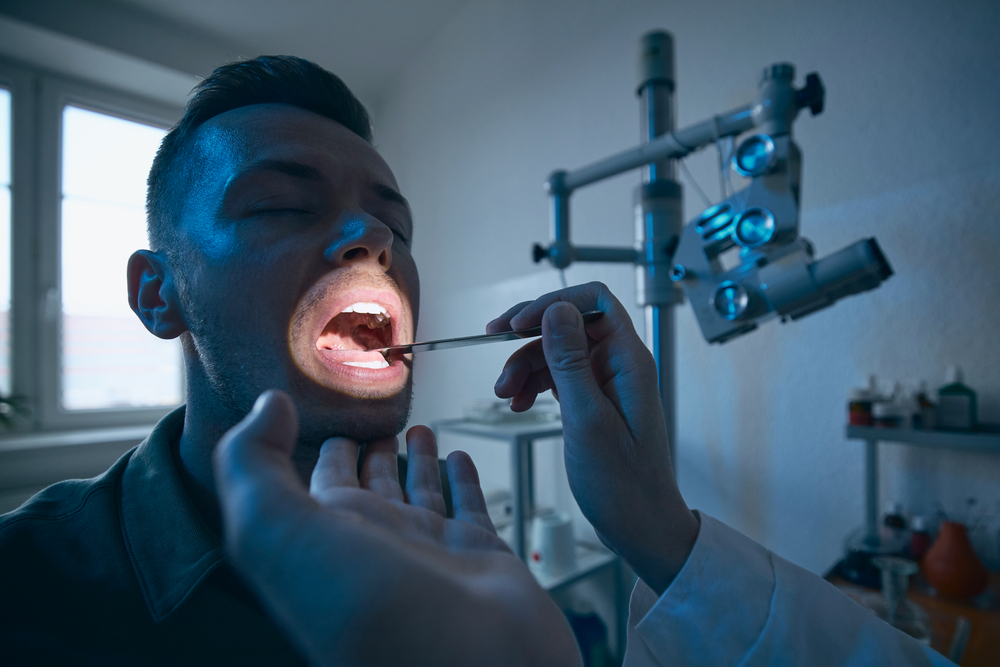Make an Appointment
Vocal cord nodules, often called “singer’s nodes”, are benign, bilateral swellings on the free edge of the vocal folds. They result from chronic phonotrauma (repeated voice misuse or overuse), and are most common among individuals who use their voices intensively: singers, teachers, call-centre workers, though anyone can be affected . Nodules interfere with normal vocal fold vibration, producing hoarseness, breathiness, reduced range and vocal fatigue. Without early intervention, nodules can become fibrotic, necessitating surgery and intensive rehabilitation. Speech pathology plays a pivotal role in both preventing nodules and guiding conservative treatment to restore healthy voice function.

Pathology of Vocal Cord Nodules
How Nodules Form
- Phonotrauma: Excessive loud talking, shouting, whispering or improper singing technique causes micro-tears in the delicate epithelium of the vocal folds.
- Inflammatory Response: The body responds by flooding the area with inflammatory cells and increasing blood flow, leading to tissue swelling.
- Fibrosis & Callus Formation: Repeated injury and healing result in thickened collagen deposition, forming callus-like nodules at the junction of the anterior and middle third of each fold, where vibration force is greatest .
Contributing Factors
- Hydration & Mucosal Health: Dehydration thickens the vocal fold lining, increasing friction.
- Environmental Irritants: Tobacco smoke, pollutants and gastric reflux expose the laryngeal mucosa to irritants, perpetuating inflammation.
- Poor Vocal Technique: Hard glottal attacks (abrupt, forceful closure) and lack of breath support increase collision forces.
- Muscle Tension Dysphonia: Excessive extrinsic laryngeal muscle tension alters fold alignment and can mimic or aggravate nodular changes .
Clinical Presentation
- Voice Quality: Hoarse, breathy or “scratchy” voice.
- Range & Endurance: Limited upper pitch range, rapid onset of vocal fatigue.
- Aural Symptoms: Occasional throat discomfort, laryngeal pain or the sensation of a “lump” in the throat.
Video-stroboscopy often reveals reduced mucosal wave and incomplete closure at the site of nodules, key indicators for targeted therapy.

Treatment for Vocal Cord Nodules
Conservative management is first-line and highly effective for early-stage nodules:
A. Voice Rest & Hygiene
- Absolute Voice Rest: No talking, whispering, throat clearing for 7–10 days to allow inflammation to subside.
- Hydration: Aim for 1.5–2 L water daily; humidify the environment to maintain mucosal pliability.
- Avoid Irritants: Eliminate smoking, reduce caffeine and alcohol, manage reflux with dietary changes and medications (e.g., proton-pump inhibitors).
- Vocal Warm-Up/Cool-Down: Gentle glides and humming before and after speaking engagements.
B. Medical Management
- Reflux Control: Proton-pump inhibitors or alginate therapies reduce laryngeal exposure to stomach acid.
- Allergy Management: Antihistamines or nasal corticosteroids minimise post-nasal drip and laryngeal irritation.
- Anti-Inflammatories: Short-term, under medical supervision, to further reduce mucosal swelling.
C. Surgical Intervention
- Microlaryngoscopic Excision: Reserved for fibrotic nodules unresponsive to at least 6–8 weeks of conservative care.
- Post-Operative Therapy: Critical voice therapy immediately post-surgery to retrain healthy phonation and prevent recurrence.
Evidence shows that over 80% of early nodules resolve completely with voice therapy alone, avoiding the need for surgery.

How Speech Therapy Helps Vocal Cord Nodules
A speech pathologist develops a structured program to eliminate trauma and re-establish efficient phonation:
Resonant Voice Therapy (RVT):
- Emphasises a forward (“buzzing”) sensation in the facial mask that achieves full, gentle vocal fold closure with minimal collision force.
- Exercises include humming, lip trills and voiced fricatives in a controlled hierarchy from simple sounds to conversational speech .
Breathing Coordination & Support:
- Diaphragmatic breathing exercises to ensure breath flow supports phonation without pushing or squeezing the throat.
- Semi-occluded vocal tract tasks (e.g., straw phonation) to promote even pressure and reduce fold stress.
Muscle Tension Reduction Techniques:
- Manual laryngeal massage and circumlaryngeal release to relax extrinsic muscles and lower laryngeal position.
- Postural realignment exercises (chin tucks, gentle cervical stretches) to reduce neck tension constellation .
Behavioural Modification & Hygienic Voice Habits:
- Identification and elimination of harmful behaviours (e.g., shouting, throat clearing).
- Education on pacing, amplification use in loud environments and strategies for safe voice use (e.g., use of microphones).
Vocal Function Strengthening:
- Systematic warm-up: gentle glides and semi-occluded tasks.
- Conditioning exercises: targeted to improve endurance (gentle sustained vowels, controlled pitch glides).
Regular measurement of acoustic parameters (jitter, shimmer, harmonic-to-noise ratio) and perceptual ratings track nodule regression and voice quality improvements over time.

Speech Therapy for Vocal Cord Dysfunction
Vocal cord dysfunction (VCD) involves paradoxical vocal fold adduction during inspiration, leading to stridor, throat tightness and dyspnoea. Though distinct from nodules, VCD often co-exists due to voice misuse patterns. Speech pathology interventions include:
Breathing Retraining:
- Abdominal (diaphragmatic) breathing to reduce reliance on upper chest muscles.
- Relaxation vocabulary paired with exhalation tasks to normalise fold movement.
Laryngeal Control Exercises:
- Semi-occluded vocal tract exercises (e.g., straw phonation) to coordinate timing of fold opening/closing.
- Low-pressure phonation tasks to desensitise hyperactive adductor reflex.
Sensory-Motor Training:
- Gentle airflow tasks (blowing bubbles, humming) to recalibrate sensory feedback and reduce laryngeal hypersensitivity.
- Stretch reflex inhibition techniques to break maladaptive muscle patterns.
Cognitive-Behavioural Strategies:
- Anxiety reduction through mindfulness, biofeedback and graded exposure to trigger situations (e.g., exercise-induced VCD).
Research indicates up to 70% improvement in VCD symptoms with comprehensive speech therapy, eliminating the need for invasive treatments.

Frequently Asked Questions
Can speech therapy help with vocal nodules?
Yes. Conservative management with resonant voice techniques, breathing support, tension reduction and behavioural changes resolves early nodules in over 80% of cases .
What is the treatment for vocal cord nodules?
Initial treatment focuses on voice rest, hydration, reflux/allergy management and speech therapy. Surgery is reserved for persistent, fibrotic nodules .
What is the pathology of vocal nodules?
They are fibrous, callus-like thickenings at the midpoint of each vocal fold caused by repeated phonotrauma, leading to incomplete fold closure and dysphonia .
Does speech therapy help vocal cord dysfunction?
Absolutely. Speech pathology uses breathing retraining, laryngeal control and sensory-motor exercises to normalise vocal fold movement and alleviate VCD symptoms .
When should I seek specialist voice therapy?
If hoarseness, vocal fatigue or throat tightness persist beyond 2–3 weeks despite voice rest and hygiene measures, book an assessment to prevent chronic changes.

Vocal cord nodules and dysfunction significantly impact voice quality, professional performance and everyday communication. Early, conservative management—led by skilled speech pathologists, often resolves nodules, restores efficient phonation and prevents recurrence.
Next Steps:
- Book a Voice Assessment with Physio Inq’s Speech Pathology service. Available in-home, in-clinic or online.
- Receive a Tailored Therapy Plan, encompassing voice hygiene, targeted exercises and behavioural strategies.
- Schedule Regular Reviews to monitor nodule regression via acoustic and stroboscopic measures.
Call 1300 731 733 or book online to start your journey to a clear, strong voice.

Date Published: Friday, May 30, 2025
Locate a Adult Speech Pathology
Service Near me
Get the experience & convinence you deserve to support your or a loved one's allied health needs.
Our Adult Speech Pathology team are currently serving & taking appointments in the following states and regions in Australia:
Need to get into direct contact with ur Client Services team? We're all ears. Call our team directly on 1300 731 733





